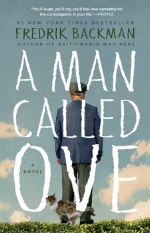Don’t Let My Baby Do Rodeo Boris Fishman (2016)
Despite the title, this novel is not primarily about rodeo, but it does have something to do with babies—specifically babies who are adopted. It’s also about the experience of Russian and Ukrainian émigrés in the United States and about a road trip through the American West. Novelist Boris Fishman assembles all these pieces skillfully.
Maya Shulman, a Ukrainian exchange student, and Alex Rubin, the only son of Russian immigrants, meet in New York in 1992. They marry and settle in New Jersey but are unable to have children. Over the objections of Alex and his parents, Maya pushes for adoption. The baby they adopt is the biological son of teenagers in Montana; the baby’s father is a rodeo cowboy. The one request of the biological mother to the adoptive parents is “Don’t let my baby do rodeo.”
By the year 2012, Maya and Alex begin to interpret some of the actions of their eight-year-old adoptive son, Max, as a reversion to his genetic origins. Maya especially becomes alarmed when Max runs away from home and when he “consorts with wild animals.” She worries that he’s becoming “feral” and insists on a car trip to Montana to seek out Max’s biological parents, hoping that they can shed light on Max’s “wildness.”
Readers may not see Max’s habits as particularly unusual for an inquisitive child. Max likes to sleep in a tent in the back yard, chew on various wild grasses, and put his face in river water to look at the pebbles and fish. One scene, in which Max cavorts with some deer in his back yard, could be taken as a bit of magic realism or could simply reflect the ubiquity and tameness of urban deer in New Jersey.
Around the main plot of the trip to Montana Fishman weaves subplots, particularly related to the influence of Alex’s parents on the marriage of Maya and Alex. Fishman pokes fun at his own Russian heritage in his portrayal of Alex’s immigrant parents. The elder Rubins have built a successful business and assimilated into American culture in many ways, but they eat traditional Russian foods, quote Russian proverbs, and oppose the adoption of Max for patriarchal cultural reasons. Maya struggles with her identity as an American wife and mother, always seeking to add new words to her English vocabulary, for example, yet chafing under some of the Old World attitudes of her husband and in-laws. In the end, she rebels against her family in a startling way.
Fishman’s writing is dense with words that are often crammed into tight sentences. This style can be rich, as when he is describing the dawn in South Dakota: “. . .the subfusc prologue of the morning was pushing up the black sky with impatience.” (249) And here is a vista in Montana: “First, there were hills, patchy and tentative, then, all of a sudden, mountains upon mountains. Maya eyed them with gratitude; she willed them to keep rising. Even Max stirred at their sight, leaning into his window. Emerald firs rose off the flanks in neat rows like heads in a choir, the cottonwoods among them so gold they looked like bullion bars.” (260)
My eye did catch occasionally on oddities of English word choice—“custom” instead of “habit, “unexisting” instead of “nonexistent,” “self-made” instead of “homemade,” and so forth. I expected these choices in the dialogue of characters whose native language was not English, but they cropped up in non-dialogue. This is a minor quibble about a book that forthrightly tackles such fraught issues as infertility, parenting an adopted child, and adapting to a new culture.

























